Last week for our Cub Scout Pack meeting we were honored to be joined by 2 time Olympian Marsha Baird. She showed the cub scouts some train and running technique. It was a fantastic time like always with cub scouts but Marsha really took our meeting to a new level!!
Monthly Archives: April 2012
5 Surprising Happiness Tricks
Feeling down? Try these all natural moves to boost your mood big time.
Right about now, we’re guessing you could use a little pick-me-up. Unpredictable weather and the serious lack of national holidays on the horizon can be a giant bummer. And while we can’t make summer hurry up and get here any quicker, these surprising—easy!—moves can have a big impact on your happiness levels right now. Try these research-backed tips for a sunnier disposition.
 The water bottle, that is. Being mildly dehydrated can make your mood, energy levels, and ability to think clearly plummet—especially if you’re a woman, according to a new study in The Journal of Nutrition. Your urine is a good way to gauge your hydration level: The darker it is, the more likely you’re dehydrated.
The water bottle, that is. Being mildly dehydrated can make your mood, energy levels, and ability to think clearly plummet—especially if you’re a woman, according to a new study in The Journal of Nutrition. Your urine is a good way to gauge your hydration level: The darker it is, the more likely you’re dehydrated. eople exposed to nature not only feel less stressed, but they also have lower levels of the stress-hormone cortisol in their bodies, finds a recent study from researchers at the University of Edinburgh in Scotland. Take a few minutes to connect with nature by taking a quick walk during your lunch break—city parks count!—or bundle up with your honey for some after-dinner stargazing. Instead of a weekend brunch date, meet your buddy for a Sunday morning hike.
eople exposed to nature not only feel less stressed, but they also have lower levels of the stress-hormone cortisol in their bodies, finds a recent study from researchers at the University of Edinburgh in Scotland. Take a few minutes to connect with nature by taking a quick walk during your lunch break—city parks count!—or bundle up with your honey for some after-dinner stargazing. Instead of a weekend brunch date, meet your buddy for a Sunday morning hike. We know, we know: When you’re bummed out, hitting the track for 15 minutes is the last thing you want to do. But if you needed another reason to be convinced that getting some exercise really can make you feel better, try these: Study participants who did at least 15 minutes of vigorous physical activity reported higher levels of excitement, finds a new study in the Journal of Sport & Exercise Psychology. Another exercise bonus: Workers who exercise are half as likely to experience burnout as their sedentary counterparts, reports new research in the Journal of Applied Psychology.
We know, we know: When you’re bummed out, hitting the track for 15 minutes is the last thing you want to do. But if you needed another reason to be convinced that getting some exercise really can make you feel better, try these: Study participants who did at least 15 minutes of vigorous physical activity reported higher levels of excitement, finds a new study in the Journal of Sport & Exercise Psychology. Another exercise bonus: Workers who exercise are half as likely to experience burnout as their sedentary counterparts, reports new research in the Journal of Applied Psychology.Weight Loss Tips That Don’t Suck
By Camille Noe Pagan
If weight loss came in a pill, the list of side effects might include “May cause shortness of cash” and “Some users experience a loss of friendships.” After all, that’s what happens when you spend half a paycheck on healthy food and pass up happy-hour invites so you can avoid the bar snacks. And those side effects aren’t just misery inducing, they’re self-defeating too: The Centers for Disease Control and Prevention found that people who turned these pitfalls into excuses were up to 76 percent less likely to lose weight than those who figured out ways around them. This advice will help you battle the bulge without missing a beat of your life.
came in a pill, the list of side effects might include “May cause shortness of cash” and “Some users experience a loss of friendships.” After all, that’s what happens when you spend half a paycheck on healthy food and pass up happy-hour invites so you can avoid the bar snacks. And those side effects aren’t just misery inducing, they’re self-defeating too: The Centers for Disease Control and Prevention found that people who turned these pitfalls into excuses were up to 76 percent less likely to lose weight than those who figured out ways around them. This advice will help you battle the bulge without missing a beat of your life.
Lose Weight, Not Friends
Ever notice that the day you announce you’re starting a new diet, your friends go AWOL? Here’s why: Cutting calories causes your level of serotonin (a feel-good brain chemical) to nosedive, leaving you cranky and unpleasant to be around.
To keep your serotonin levels in check, figure out how many calories your body needs based on your activity level. And make sure those calories are split evenly among protein, whole grains, and produce at every meal.
“Unbalanced meals—made entirely of refined carbs, for example—cause blood-sugar fluctuations that make you irritable,” says Caroline M. Apovian, M.D., director of the Nutrition and Weight Management Center at Boston Medical Center.
Apovian also recommends adding omega-3 fatty acids to your diet, because research shows that they may fight depression and slow digestion, which helps you stay full longer. (Try eating two or three three-ounce servings of salmon a week, or adding a tablespoon of olive oil, canola oil, or flaxseeds into your daily meals.)
Lose Weight, Not Money
When you’re on a diet, you expect your stomach to be on the empty side—not your wallet. But researchers at the University of Washington found that the cost of healthy, nutrient-dense foods like whole grains and lean meats has increased nearly 30 percent in the past four years, while candy and soft drinks have gone up only 15 percent.
One money-saving tactic: Eat less meat. “Meat is one of the priciest items on a grocery bill, and most Americans eat more of it than they should,” says Dawn Jackson Blatner, R.D., a spokesperson for the American Dietetic Association and the author of The Flexitarian Diet. Plus, meat is a source of excess calories and saturated fat.
Most women can slash around 15 percent of their daily calories by sticking to one or two servings of meat a day, estimates Blatner. Fill the void with fiber-rich foods like beans, oatmeal, and brown rice, plus hearty veggies like portobello mushrooms and eggplant. All of these will fill you up for a fraction of the calories and cash.
Lose Weight, Not Time
In a recent study, 41 percent of women cited “not enough time” as the reason they don’t eat better. Spending just an hour or two on the weekend shopping for a week’s worth of healthy meals and getting a jump-start on the prep work (cutting veggies, making marinades) will save you time and pounds in the long run. A survey by the CDC found that almost 40 percent of people who lost a significant amount of weight and kept it off planned their weekly meals.
“When you don’t map out your meals, you’re too tempted to grab whatever’s nearby, which is often high-calorie junk,” says Elizabeth Ricanati, M.D., founding medical director of the Lifestyle 180 Program at the Cleveland Clinic.
Lose Weight, Not Muscle
If you drop weight without lifting any, you risk shedding muscle tissue instead of fat. Muscle takes more than twice as many calories to maintain, and it keeps your metabolism revving at peak calorie-burning speed, so it’s important to hang on to it, says Donald Hensrud, M.D., an associate professor of preventive medicine and nutrition at the College of Medicine at the Mayo Clinic.
Your best strategy is to eat lots of protein and strength train for 20 to 30 minutes two or three times a week. Protein will fuel those workouts and help you maintain lean muscle, says Hensrud. Eat at least three or four servings of two to three ounces of protein-rich beans, soy, fish, lean meat, poultry, or low-fat dairy every day.
Lose Weight, Not Your Lifestyle
Watching your waistline doesn’t mean you have to become a recluse who spends every spare moment on the elliptical machine. In fact, an all-or-nothing approach is counterproductive. “Many women make changes they’ll never be able to stick with—like eating nothing but raw food or vowing to go for a run at 5 a.m. every day—and set themselves up for failure,” says Hensrud. “Total deprivation doesn’t work.”
He advocates skipping extreme regimens in favor of small changes. When he asked a group of overweight study subjects to make several small lifestyle shifts—such as eating breakfast, having as many veggies as they’d like with each meal, and watching TV for only as long as they’d exercised that day—they dropped an average of eight pounds in two weeks. “When you combine a bunch of little strategies, the cumulative effect can be huge, and you won’t feel as if you’ve given up your entire life to be slim.”
Original Article: http://www.womenshealthmag.com/weight-loss/diet-rules?cm_mmc=Yahoo_Health-_-Your%20Body%20On___%20A%20Detox-_-Article-_-Weight%20Loss%20Tips%20That%20Don’t%20Suck
Foods for Deep Sleep
Food can be a strong support in the quest for a good night’s sleep. Some insomnia sufferers wake at night because their blood sugar drops too low. Adequate protein and healthy fat intake can help stabilize blood sugar through the night, and allow the liver to let out stored sugar molecules as needed for a good night’s sleep. Foods can also support the healthy production of brain neurotransmitters and create calming results in the body.
Here are the most common sleep scenarios and some of our favorite food solutions for sleep.
Solves This Problem: Trouble Falling Asleep
 The Montmorency cherry is a type of sour cherry. The color is not as dark as the cherries we typically see in the stores. These cherries are great because they have about 6 times the amount of melatonin than a regular cherry. If you can find a cherry juice concentrate, this will also increase the concentration of melatonin even more.
The Montmorency cherry is a type of sour cherry. The color is not as dark as the cherries we typically see in the stores. These cherries are great because they have about 6 times the amount of melatonin than a regular cherry. If you can find a cherry juice concentrate, this will also increase the concentration of melatonin even more.
Melatonin is a hormone produced in your brain’s pineal gland. When it gets dark outside, your eyes sense the lighting change and starts making this hormone, which communicates to your body that it is time to prepare to sleep. Melatonin helps maintain your daily body rhythms, and is an important antioxidant in the body known to fight cancer. In fact, low amounts are shown to increase risk of cancer.
You can find these special cherries in some fine food stores when they are in season. Sometimes they can be found in the frozen section, or look for a Montmorency cherry juice concentrate.
Solves This Problem: Trouble Staying Asleep
Pumpkin seeds and the powder from pumpkin seeds have relatively high amounts of the amino acid tryptophan. Tryptophan is the amino acid the body uses to make the feel-good and relaxation neurotransmitter serotonin. Pumpkin seeds also contain high amounts of zinc, which can help the brain convert tryptophan into serotonin. Serotonin levels are typically low in people who cannot stay asleep and wake throughout the night.
It is best to take about 1 cup of seeds or ½ cup of the powder with applesauce or another healthy carbohydrate; the carbohydrate allows the tryptophan to get into the brain in higher amounts.
Solves This Problem: Nervous Exhaustion and Sleeplessness
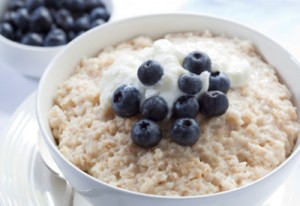 A favorite breakfast food, oatmeal is really a cereal grain made from the herb Avena sativa. Avena is known in traditional herbal medicine as a calming plant that is nutritious for a frazzled nervous system. We often recommend regular intake of oatmeal to help our patients’ bodies cope with long-term stressors more effectively.
A favorite breakfast food, oatmeal is really a cereal grain made from the herb Avena sativa. Avena is known in traditional herbal medicine as a calming plant that is nutritious for a frazzled nervous system. We often recommend regular intake of oatmeal to help our patients’ bodies cope with long-term stressors more effectively.
Oats contain melatonin and complex carbohydrates that can help more tryptophan get into the brain to help you sleep. It also contains vitamin B6, a vitamin which is a co-factor that helps more serotonin get produced in the brain as well.
While you might think of oatmeal only as a breakfast food, it also is a smart choice for a bedtime snack. The Scottish recommend a bowl of oatmeal in the evening to get you feeling nice and sleepy.
Solves With Problem: Hormonal Issues With Sleep Problems
 Dark green leafy vegetables have more nutrients than we will probably ever completely understand. While dandelion is not traditionally known as a sleep-inducing food, we have found using the liver-cleansing properties of dandelion to be a valuable aid in helping sleep.
Dark green leafy vegetables have more nutrients than we will probably ever completely understand. While dandelion is not traditionally known as a sleep-inducing food, we have found using the liver-cleansing properties of dandelion to be a valuable aid in helping sleep.
A healthy liver will balance blood sugar. Blood sugar fluctuations and drops are a major factor in insomnia and waking at night. Hormonal issues, especially in perimenopause and post-menopause can also stop a woman from obtaining a good night’s sleep. In Chinese medicine, foods like dandelion can help balance the liver and nourish the yin, which ultimately strengthens the function of the blood, fluids and hormonal balance.
We like our dandelion as part of a good dinner. We often steam or blanch the dandelion first, then sauté with garlic and organic extra virgin olive oil.
Original Article: http://health.yahoo.net/articles/sleep/photos/what-eat-deep-sleep#0
Last Session of Yoga
With only 4 days left of me doing P90X2 brings the last session of yoga. So of course I filmed myself to show everyone that I truely do my yoga.
10 Tips and Tricks for Pleasing Picky Eaters
 Family dinners are supposed to be fun and relaxing, not epic battles over peas and broccoli. Here are ten simple ways to please picky eaters — from grandchildren to grandparents — without a lot of extra fuss.
Family dinners are supposed to be fun and relaxing, not epic battles over peas and broccoli. Here are ten simple ways to please picky eaters — from grandchildren to grandparents — without a lot of extra fuss.
Family dinners are supposed to be fun and relaxing, not epic battles over peas and broccoli. Here are ten simple ways to please picky eaters — from grandchildren to grandparents — without a lot of extra fuss.
1. Use nostalgia.
Seeing or smelling or tasting a food and being transported back to an earlier time is powerful, in part, because it’s so universal. Most people have fond memories of their mom’s meat loaf or their dad’s hamburgers or their grandma’s cookies. Tap into these memories when trying to find meals to please your picky eaters.
Older adults probably have a long list of foods they can remember eating and liking. Ask them about it. Is there a family recipe book or box of recipe cards that you can find? Can your mother remember the casserole her mother used to make — and teach you how to make it? Can your father remember what he ate on his first date — and share the story with the whole family over the same meal?
Even young kids experience food nostalgia. Ask them if they remember the barbecued chicken their grandfather made or the big pasta dinner you all had together at your parents’ house — and then eat the same meal together.
2. Create nostalgia.
With a little psychological maneuvering, you may be able to create nostalgic food memories as a family.
If you’re on a family vacation, try introducing new foods, especially if they’re regional specialties (corn in the Midwest, apples in the Northeast, coconuts in the Caribbean). People are more willing to try new foods — and new behaviors — when they’re out of their normal context and comfort zone. Especially for kids, the novelty of being in a new place might encourage them to try new foods.
If you happen upon a new food or two that they’re willing to eat on vacation, try those items again at home after a few weeks, while reminiscing about the highlights of the vacation.
3. Blanch vegetables like a pro.
It’s no surprise that most people don’t like Brussels sprouts that have been boiled to  near mushiness, or broccoli that’s steamed so much that it’s falling apart. There are better ways to cook vegetables so that even picky eaters will like them.
near mushiness, or broccoli that’s steamed so much that it’s falling apart. There are better ways to cook vegetables so that even picky eaters will like them.
Blanching sounds like a fancy French technique, but it’s actually surprisingly simple. Just bring a big pot of salted water to a boil and fill another big bowl with cold water. Using tongs, a heat-safe slotted spoon, or a kitchen sieve, lower a handful of prepped vegetables into the boiling water. Let them cook for a minute or two (experiment and adjust the timing to your taste and the type of veggie you’re cooking), and then scoop them out of the hot water and into the cold water. Let the water on the stove return to a boil, and then cook the next small batch of vegetables. This technique cooks veggies quickly but retains their satisfying crunch — and works particularly well for items such as broccoli florets or green beans.
4. Roast vegetables like a pro.
Roasting vegetables is even easier than blanching — just line a baking sheet with aluminum foil (to make cleanup easier), spread out prepped vegetables, and drizzle with some olive oil. Slide the sheet into a 400-degree oven, then pull it out when the vegetables are soft and caramelized.
Roasting brings out the natural sugars in produce, making the vegetables sweeter and therefore more likely to please a picky eater. Roasting works well for almost any vegetable, from eggplant to tomatoes to Brussels sprouts. Even kale and other greens can be roasted, which gives them a texture, almost like that of potato chips, that many picky eaters love.
5. Make mix-and-match meals.
There’s a reason that almost every cafeteria has a salad bar and why fast-food restaurants like Subway and Chipotle do so well: People love designing their own perfect meals.
It’s easy to set up the same system — essentially a mini buffet — at home. Invest in some cute plates and bowls (or your regular salad plates and soup bowls will do just fine) and place out lots of different ingredients for everyone to mix and match as they please.
If you’re making salads, set out the lettuce, carrots, cucumbers, cheese, apples, and salad dressing separately. If you’re making tacos or fajitas, put the meat in one bowl, the cheese in another, the avocado in another, and the salsa in yet another. You can make sandwich bars this way, or serve a soup with several optional add-ins, or set up a breakfast oatmeal station with lots of different toppings.
6. Put your picky eater in charge of a side dish.
Experts disagree about whether it’s a good idea to let picky eaters make a peanut butter sandwich instead of eating the chicken dish you prepared, but they all agree that you shouldn’t be made to feel like a short-order cook.
One simple compromise: Put the picky eater in charge of a side dish. Let her pick out what she wants and, depending on her ability, handle or help out with the prep and grocery shopping too. That way she can contribute to the family meal (and experience what it’s like to get mixed reviews). Plus she has at least one thing on her plate that she likes to eat.
7. Pay attention to the presentation.
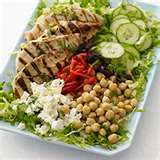 Part of the reason restaurant chefs make big bucks is because they make food look elegant and mouthwatering. But you don’t need a culinary or art degree to make a meal look appetizing.
Part of the reason restaurant chefs make big bucks is because they make food look elegant and mouthwatering. But you don’t need a culinary or art degree to make a meal look appetizing.
Use pretty dishes and silverware, and get out the bright cloth napkins even for a weekday dinner. Everyone loves personal servings of food, from cupcakes to individual pot pies, so see if you can make mini versions of whatever’s on the menu. Kids will love it, for example, if you bake them a personal pizza with a smiley face made out of veggies.
People pay attention to bright colors, so use this to your advantage. If your toddler loves colorful food, play it up by seeking out orange sweet potatoes or purple fingerling potatoes for a delicious mashed side dish.
On the other hand, if your mom won’t touch anything that’s green, try cooking spinach in tomato sauce or covering broccoli with bright yellow cheese sauce, so she won’t be immediately put off by the presentation.
8. Eat out.
It’s rare these days to find recommendations to eat in restaurants more often, especially since home cooking is generally cheaper, healthier, and tastier than eating out. But for a family with a picky eater, a weekly restaurant trip might be a good idea.
The beauty of a restaurant is all the choices on the menu. Without any extra work on your part, the picky eater can have her favorite food, and everyone else can get something they like too. Be sure to choose a restaurant with a wide menu — but don’t feel constrained to go to the picky eater’s favorite place every time if there are other places that will serve something she finds acceptable.
People often assume that whatever’s on a restaurant menu is what you get. In fact, most restaurants are happy to work with your picky eater on food substitutions. If one main dish and one side dish look particularly good to her, ask if you can get them together even if they don’t go together on the menu.
Meanwhile, make the most of your restaurant trip by ordering the food you crave but can’t cook at home. If your picky eater won’t eat seafood, order the oysters. If it’s always an epic battle to get a salad on the table, order a huge one with everything you like on it. And make sure that everyone else in your family has a chance to eat the kind of food he or she likes, too.
9. Get takeout.
Sometimes even a restaurant won’t provide enough options. If you’re craving Chinese food but your picky eater will eat only pasta, chances are there are Asian and Italian restaurants near each other. Swing by both and make everyone happy, or check online to see if there are local restaurant delivery services in your area that will deliver more than just pizza.
10. Enlist her doctor’s help.
If none of these strategies work for you and your picky eater’s crackers-only diet has you worried about her nutrition, talk to her doctor about it.
Many children and adults do just fine even on very restricted diets, so the doctor may be able to allay your fears or suggest supplementing regular meals with a multivitamin or some other alternative.
If the doctor is also concerned, however, ask him or her to talk to your picky eater. She might listen to a professional even though she just tunes you out.
Original Article: http://www.caring.com/articles/tips-and-tricks-for-pleasing-picky-eaters
BeachBody Ultimate Reset Cleanse
Want more energy and an efficient digestive system? Check out the Beachbody Ultimate Reset ™.
What are the benefits of the Beachbody Ultimate Reset?
In just 21 days, the Ultimate Reset can help you gently restore your body to its original factory settings,” to help you:
• Have more energy and greater focus*
• Experience better digestion and a more positive mood*
• Enable your body to function more efficiently*
• Lose weight*
• Improve your overall health*
What the Beachbody Ultimate Reset™ is NOT:
• A starvation diet. (You’ll eat three filling, healthy meals every day.)
• An abrupt cleanse that’s hard on the body. (The supplements work together gradually to gently shift your body’s internal settings.)*
• A laxative-based, colon-focused cleanse, which fails to truly detoxify the whole body. (You won’t be running to the bathroom every hour!)
On May 7th I will start my Cleanse to reset my body. Message me about starting your cleanse, me@coachgshort.com .
Testimonials:
“My cholesterol level actually dropped 25 points in 21 days!”
—Angie M., Ultimate Reset ™ Test Group Participant
“In 21 days, I learned to not be an emotional eater anymore.”
—Dawn A., Ultimate Reset ™ Test Group Participant
“The Beachbody Ultimate Reset isn’t a starvation program. It’s not an abrupt cleanse, or a laxative-focused program. It’s a gentle, comprehensive, whole-body Reset.”
—Charles C., Ultimate Reset ™ Test Group Participant
“The habits I’ve developed and the lessons I’ve learned will definitely stick with me for the rest of my life.”
—Eric D., Ultimate Reset ™ Test Group Participant
“The Beachbody Ultimate Reset opened my eyes to a whole variety of foods I’d never experienced before. I actually began tasting the food I was eating.”
—Russell P., Ultimate Reset™ Test Group Participant
1 In 10 Adults May Have Diabetes By 2030
GENEVA — The International Diabetes Federation predicts that at least one in 10 adults could have diabetes by 2030, according to its latest statistics.
 In a report issued on Monday, the advocacy group estimated that 552 million people could have diabetes in two decades’ time based on factors like aging and demographic changes. Currently, the group says that about one adult in 13 has diabetes.
In a report issued on Monday, the advocacy group estimated that 552 million people could have diabetes in two decades’ time based on factors like aging and demographic changes. Currently, the group says that about one adult in 13 has diabetes.
The figure includes both types of diabetes as well as cases that are undiagnosed. The group expects the number of cases to jump by 90 percent even in Africa, where infectious diseases have previously been the top killer. Without including the impact of increasing obesity, the International Diabetes Federation said its figures were conservative.
According to the World Health Organization, there are about 346 million people worldwide with diabetes, with more than 80 percent of deaths occurring in developing countries. The agency projects diabetes deaths will double by 2030 and said the International Diabetes Federation’s prediction was possible.
“It’s a credible figure,” said Gojka Roglic, head of WHO’s diabetes unit. “But whether or not it’s correct, we can’t say.”
Roglic said the projected future rise in diabetes cases was because of aging rather than the obesity epidemic. Most cases of diabetes are Type 2, the kind that mainly hits people in middle age, and is linked to weight gain and a sedentary lifestyle.
Roglic said a substantial number of future diabetes cases were preventable. “It’s worrying because these people will have an illness which is serious, debilitating, and shortens their lives,” she said. “But it doesn’t have to happen if we take the right interventions.”
20 Habits That Make You Fat
Decades ago, around the time of Steven Tyler’s last haircut, a completely wrong-headed idea started being passed around America’s dinner tables: Eating fat makes you fat.
Wrong. Eating fat won’t make you fat, any more than eating money will make you rich. Calories make you fat, and most “low-fat” or “fat-free” foods actually have just as many calories as their full-fat versions, because of added sugar and chemicals. And there’s no debate on this one: Since we made “cut down on fat” our favorite food craze roughly 30 years ago, the U.S. obesity rate has doubled. Among children, it has tripled. That’s a failed food policy if ever there was one.
But it’s just one of many “get fat” habits that can be turned into a “slim-down” habit, starting today. All you need is a pinch of resolve and a few new routines. Here are the 20 habits you can replace right now . . .
#1: Eating “low-fat”
 It sounds crazy, but stop buying foods marketed as low-fat or fat-free. Typically, they save you only a few calories and, in doing so, they replace harmless fats with low-performing carbohydrates that digest quickly—causing a sugar rush and, immediately afterward, rebound hunger. Researchers from the University of Alabama at Birmingham found that meals that limited carbohydrates to 43 percent were more filling and had a milder effect on blood sugar than meals with 55 percent carbohydrates. That means you’ll store less body fat and be less likely to eat more later.
It sounds crazy, but stop buying foods marketed as low-fat or fat-free. Typically, they save you only a few calories and, in doing so, they replace harmless fats with low-performing carbohydrates that digest quickly—causing a sugar rush and, immediately afterward, rebound hunger. Researchers from the University of Alabama at Birmingham found that meals that limited carbohydrates to 43 percent were more filling and had a milder effect on blood sugar than meals with 55 percent carbohydrates. That means you’ll store less body fat and be less likely to eat more later.
#2: Not seeking nutrition advice
Good news here: By reading this, you’re already forming habits that can help you shed pounds. When Canadian researchers sent diet and exercise advice to more than 1,000 people, they found that the recipients began eating smarter and working more physical activity into their daily routines. Not surprisingly, the habits of the non-recipients didn’t budge.
#3: Sleeping too little or too much
According to Wake Forest researchers, dieters who sleep five hours or less put on 2½ times more belly fat, while those who sleep more than eight hours pack on only slightly less than that. Shoot for an average of six to seven hours of sleep per night—the optimal amount for weight control.
#4: Eating free restaurant foods
Breadsticks, biscuits, and chips and salsa may be complimentary at some restaurants, but that doesn’t mean you won’t pay for them. Every time you eat one of Olive Garden’s free breadsticks or Red Lobster’s Cheddar Bay Biscuits, you’re adding an additional 150 calories to your meal. Eat three over the course of dinner and that’s 450 calories. That’s also roughly the number of calories you can expect for every basket of tortilla chips you get at your local Mexican restaurant. What’s worse, none of these calories comes paired with any redeeming nutritional value. Consider them junk food on steroids.
#5: Drinking soda—even diet!
 The average American guzzles nearly a full gallon of soda every week. Why is that so bad? Because a 2005 study found that drinking one to two sodas per day increases your chances of being overweight or obese by nearly 33 percent. And diet soda is no better. When researchers in San Antonio tracked a group of elderly subjects for nearly a decade, they found that compared to nondrinkers, those who drank two or more diet sodas a day watched their waistlines increase five times faster. The researchers theorize that the artificial sweeteners trigger appetite cues, causing you to unconsciously eat more at subsequent meals.
The average American guzzles nearly a full gallon of soda every week. Why is that so bad? Because a 2005 study found that drinking one to two sodas per day increases your chances of being overweight or obese by nearly 33 percent. And diet soda is no better. When researchers in San Antonio tracked a group of elderly subjects for nearly a decade, they found that compared to nondrinkers, those who drank two or more diet sodas a day watched their waistlines increase five times faster. The researchers theorize that the artificial sweeteners trigger appetite cues, causing you to unconsciously eat more at subsequent meals.
#6: Skipping meals
In a 2011 national survey from the Calorie Control Council, 17 percent of Americans admitted to skipping meals to lose weight. The problem is, skipping meals actually increases your odds of obesity, especially when it comes to breakfast. A study from the American Journal of Epidemiology found that people who cut out the morning meal were 4.5 times more likely to be obese. Why? Skipping meals slows your metabolism and boosts your hunger. That puts your body in prime fat-storage mode and increases your odds of overeating at the next meal.
#7: Eating too quickly
If your body has one major flaw, this is it: It takes 20 minutes for your stomach to tell your brain that it’s had enough. A study in the Journal of the American Dietetic Association found that slow eaters took in 66 fewer calories per meal, but compared to their fast-eating peers, they felt like they had eaten more. What’s 66 calories, you ask? If you can do that at every meal, you’ll lose more than 20 pounds a year!
#8: Watching too much TV
A University of Vermont study found that overweight participants who reduced their TV time by just 50 percent burned an additional 119 calories a day on average. That’s an automatic 12-pound annual loss! Maximize those results by multitasking while you watch—even light household tasks will further bump up your caloric burn. Plus, if your hands are occupied with dishes or laundry, you’ll be less likely to mindlessly snack—the other main occupational hazard associated with tube time.
#9: Ordering the combo meal
A study in the Journal of Public Policy & Marketing shows that compared to ordering a la carte, you pick up a hundred or more extra calories by opting for the “combo” or “value meal.” Why? Because when you order items bundled together, you’re likely to buy more food than you want. You’re better off ordering your food piecemeal. That way you won’t be influenced by pricing schemes designed to hustle a few more cents out of your pocket.
#10: Facing the buffet
Cornell researchers found that when eating at a buffet-style restaurant, obese diners were 15 percent more likely to choose seats with a clear view of the food. Your move: Choose a seat that places your back toward the spread. It will help you avoid fixating on the food.
#11: Eating off larger plates
 One study found that when given an option, a whopping 98.6 percent of obese individuals opt for larger plates. Translation: More food, more calories, and more body fat. Keep your portions in check by choosing smaller serving dishes. If need be, you can always go back for seconds.
One study found that when given an option, a whopping 98.6 percent of obese individuals opt for larger plates. Translation: More food, more calories, and more body fat. Keep your portions in check by choosing smaller serving dishes. If need be, you can always go back for seconds.
#12: Putting serving dishes on the table
Resist setting out foods buffet- or family-style, and opt instead to serve them from the kitchen. A study in the journal Obesity found that when food is served from the dinner table, people consume 35 percent more over the course of the meal. When an additional helping requires leaving the table, people hesitate to go back for more.
#13: Choosing white bread
 A study from the American Journal of Clinical Nutrition found that when obese subjects incorporated whole grains into their diets, they lost more abdominal fat over the course of 12 weeks. There are likely multiple factors at play, but the most notable is this: Whole grain foods pack in more fiber and an overall stronger nutritional package than their refined-grain counterparts.
A study from the American Journal of Clinical Nutrition found that when obese subjects incorporated whole grains into their diets, they lost more abdominal fat over the course of 12 weeks. There are likely multiple factors at play, but the most notable is this: Whole grain foods pack in more fiber and an overall stronger nutritional package than their refined-grain counterparts.
#14: Taking big bites
The American Journal of Clinical Nutrition found that people who took large bites of food consumed 52 percent more calories in one sitting than those who took small bites and chewed longer. By cutting food into smaller pieces, you can increase satiety and enjoy your food more thoroughly. A good general rule? The smaller your bites, the thinner your waistline.
#15: Not drinking enough water
 Adequate water intake is essential for all your body’s functions, and the more you drink, the better your chances of staying thin. In one University of Utah study, dieting participants who were instructed to drink two cups of water before each meal lost 30 percent more weight than their thirsty peers. And you can magnify the effect by adding ice. German researchers found that six cups of cold water a day could prompt a metabolic boost that incinerates 50 daily calories. That’s enough to shed five pounds a year!
Adequate water intake is essential for all your body’s functions, and the more you drink, the better your chances of staying thin. In one University of Utah study, dieting participants who were instructed to drink two cups of water before each meal lost 30 percent more weight than their thirsty peers. And you can magnify the effect by adding ice. German researchers found that six cups of cold water a day could prompt a metabolic boost that incinerates 50 daily calories. That’s enough to shed five pounds a year!
#16: Having overweight friends
Research from the New England Journal of Medicine indicates that when a friend becomes obese, it ups your chance of obesity by 57 percent. This probably has to do with the social norms that you’re exposed to. Rather than ditch a friend who starts to put on a few extra pounds though, suggest healthy activities that you can do together, and avoid letting him or her dictate the meal (“Let’s split the cheesecake!”).
#17: Eating too late
Your body can burn flab while you sleep, but only if it isn’t too busy processing a full stomach. A new study in the journal Obesity looked at the sleeping and eating habits of 52 people over seven days, and it found that those who ate after 8 p.m. took in the most daily calories and had the highest BMIs.
#18: Not using a scale
Looking at your body weight reinforces weight-loss goals and makes it difficult to cheat your diet. When University of Minnesota researchers observed dieters who weighed themselves daily, they discovered that the routine of stepping on a scale helped those people lose twice as much weight as those who weighed themselves less frequently. Avoid being thrown off by natural fluctuations in body weight by stepping onto the scale at the same time every day.
#19: Drinking fruity beverages
Most restaurants and bars have ditched their fresh-fruit recipes in favor of viscous syrups made mostly from high fructose corn syrup and thickening agents. As a general rule, the more garnishes a drink has hanging from its rim, the worse it is for your waistline.
#20: Eating when emotional
A study from the University of Alabama found that emotional eaters—those who admitted eating in response to emotional stress—were 13 times more likely to be overweight or obese. If you feel the urge to eat in response to stress, try chewing a piece of gum, chugging a glass of water, or taking a walk around the block. Create an automatic response that doesn’t involve food and you’ll prevent yourself from overloading on calories.
20 Scariest Food Facts
There’s a scene in the 1973 movie Soylent Green where food shortages cause people to riot in the street, and the throng becomes so unruly that front-loading construction machines roll in and begin shoveling people up into big metal buckets. These people are hungry—no, ravenous—for a food called soylent green. But here’s the twist: They know that they love soylent green, but they have no clue what it’s made from.
Sound familiar? It should. That’s basically how we eat today. Okay, we’re not rioting in the streets, but it’s rare that we fully understand what’s in the food we’re eating. Pick up a random package in the supermarket and look at the ingredient list. Chances are you won’t know half the ingredients. Of course, Soylent Green is just a movie, and we eventually learn that the food that people are rioting for is made from dead humans.
Fortunately, no food company has yet to put the deceased into our Cornflakes or Pop-Tarts, but that doesn’t mean we’re completely safe from the dangers of mystery. Take a look at the gross, disturbing, and downright frightening facts Eat This, Not That! 2012 has uncovered. You may never look at food the same way.
1. Your food can legally contain maggots, rodent hair, and insect eggs.
The FDA allows certain “defects” to slide by. Have a look at what your food can carry:
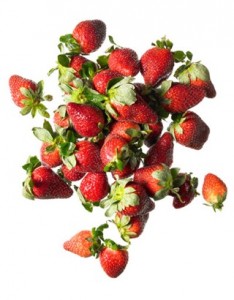 Canned pineapple can pack in up to 20% moldy fruit.
Canned pineapple can pack in up to 20% moldy fruit.- Berries can harbor up to 4 larvae per 100 grams.
- Oregano can legally contain up to 1,250 insect fragments per 10 grams.
- Cinnamon can carry up to 1 milligram of animal excrement per pound.
- Ocean perch can harbor small numbers of copepods, parasites that create pus pockets.
2. Nutritious food costs 10 times as much as junk food.
 University of Washington researchers calculated the cost discrepancy between healthy food and junk foods and found that 2,000 calories of junk food rings up at a measly $3.52 a day. Yet for 2,000 calories of nutritious grub, the researchers plunked down $36. To add insult to fiscal injury, out of every dollar you spend on food, only 19 cents goes toward the stuff you eat. The other 81 percent goes toward marketing, manufacturing, and packaging. Think about that the next time your grocery bill jumps into triple-digit dollars.
University of Washington researchers calculated the cost discrepancy between healthy food and junk foods and found that 2,000 calories of junk food rings up at a measly $3.52 a day. Yet for 2,000 calories of nutritious grub, the researchers plunked down $36. To add insult to fiscal injury, out of every dollar you spend on food, only 19 cents goes toward the stuff you eat. The other 81 percent goes toward marketing, manufacturing, and packaging. Think about that the next time your grocery bill jumps into triple-digit dollars.
3. Grocers don’t have to tell you where your salad comes from.
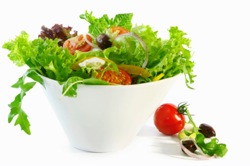 With fresh fruits and vegetables, supermarkets must tell you the country of origin, but with dried fruit and mixed produce, the law isn’t so strict. That means a mixed bag of salads isn’t required to disclose its location, and that can create problems if there’s a bacterial outbreak. News reports might warn you about E. Coli-tainted spinach coming from a certain country, but if your spinach is packaged with other greens, you’ll have no way of knowing if it’s in your bag. That’s a huge problem considering leafy greens top the CDC’s list of foods most commonly associated with food borne illness.
With fresh fruits and vegetables, supermarkets must tell you the country of origin, but with dried fruit and mixed produce, the law isn’t so strict. That means a mixed bag of salads isn’t required to disclose its location, and that can create problems if there’s a bacterial outbreak. News reports might warn you about E. Coli-tainted spinach coming from a certain country, but if your spinach is packaged with other greens, you’ll have no way of knowing if it’s in your bag. That’s a huge problem considering leafy greens top the CDC’s list of foods most commonly associated with food borne illness.
4. Fruits and vegetables are losing their nutrients.
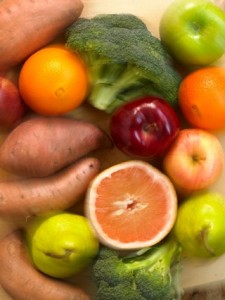 According to the USDA, the fruits and vegetables we eat today may contain significantly fewer nutrients than those our grandparents ate. Researchers looked at 43 produce items and discovered drops in protein (6 percent), calcium (16 percent), iron (15 percent), riboflavin (38 percent), and vitamin C (20 percent). Your move: Eat more fruits and vegetables.
According to the USDA, the fruits and vegetables we eat today may contain significantly fewer nutrients than those our grandparents ate. Researchers looked at 43 produce items and discovered drops in protein (6 percent), calcium (16 percent), iron (15 percent), riboflavin (38 percent), and vitamin C (20 percent). Your move: Eat more fruits and vegetables.
5. Calorie counts on nutrition fact labels aren’t accurate.
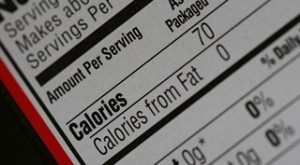 Researchers at Tufts University recently analyzed 269 food items from 42 national sit-down and fast-food restaurant chains, and they found that nearly 20 percent of samples contained 100 or more calories than reported by the restaurants. Think about it like this: If every meal you eat has 100 more calories than you need, you’ll gain more than 30 pounds this year.
Researchers at Tufts University recently analyzed 269 food items from 42 national sit-down and fast-food restaurant chains, and they found that nearly 20 percent of samples contained 100 or more calories than reported by the restaurants. Think about it like this: If every meal you eat has 100 more calories than you need, you’ll gain more than 30 pounds this year.
6. Chicken today contains 266 percent more fat than it did 40 years ago.
 What’s more, today’s chicken also has 33 percent less protein, according to a study from the Institute of Brain Chemistry and Human Nutrition at London Metropolitan University. The problem is modern farming practices. Cramped environments and unnatural diets produce birds that have the same weight problems as the humans who eat them.
What’s more, today’s chicken also has 33 percent less protein, according to a study from the Institute of Brain Chemistry and Human Nutrition at London Metropolitan University. The problem is modern farming practices. Cramped environments and unnatural diets produce birds that have the same weight problems as the humans who eat them.
7. Milk contains hormones that may cause cancer.
 In 1970, a typical dairy cow could produce about 10,000 pounds of milk per year. Today, that same cow produces roughly 20,000 pounds. So did cows change? Nope. It’s their feed that’s different. Today’s cows are routinely fed a hormone called recombinant bovine somatotropin, or rBST. Problem is, studies have linked rBST to a multitude of cancers, including those of the prostate, breast, and colon. And while milk from rBST-treated cows is ubiquitous in America’s supermarkets, some of the biggest players are getting wise. Stores like Whole Foods, Wal-Mart, and Kroger only carry rBST-free dairy.
In 1970, a typical dairy cow could produce about 10,000 pounds of milk per year. Today, that same cow produces roughly 20,000 pounds. So did cows change? Nope. It’s their feed that’s different. Today’s cows are routinely fed a hormone called recombinant bovine somatotropin, or rBST. Problem is, studies have linked rBST to a multitude of cancers, including those of the prostate, breast, and colon. And while milk from rBST-treated cows is ubiquitous in America’s supermarkets, some of the biggest players are getting wise. Stores like Whole Foods, Wal-Mart, and Kroger only carry rBST-free dairy.
8. Conventional supermarket peaches can be coated with as many as nine different pesticides.
 Because peaches are prone to bruising, blemishing, and insect takeover, they’re routinely soaked in chemicals in the weeks before being shipped off to the supermarket. That’s why the Environmental Working Group rates peaches among the dirtiest conventional fruits in America. Also on that list: apples, celery, strawberries, and spinach. As a general rule, unless the produce has a thick, impermeable skin, assume it’s soaked in pesticides. Now wash it with water and mild soap before you eat it.
Because peaches are prone to bruising, blemishing, and insect takeover, they’re routinely soaked in chemicals in the weeks before being shipped off to the supermarket. That’s why the Environmental Working Group rates peaches among the dirtiest conventional fruits in America. Also on that list: apples, celery, strawberries, and spinach. As a general rule, unless the produce has a thick, impermeable skin, assume it’s soaked in pesticides. Now wash it with water and mild soap before you eat it.
9. You’re probably eating trans fat without knowing it.
 Slack FDA regulations allow food processors to claim zero trans fats even if the food contains .49 grams. To be clear, that’s .49 grams per serving. That means by the time you finish, say, an entire bag of Cheetos, you might be ingesting nearly 5 grams of trans fat. Sure the bag says “0 GRAMS TRANS FAT” right on the front, but if you look at the ingredient statement, you’ll see partially hydrogenated oil, the primary source of trans fat.
Slack FDA regulations allow food processors to claim zero trans fats even if the food contains .49 grams. To be clear, that’s .49 grams per serving. That means by the time you finish, say, an entire bag of Cheetos, you might be ingesting nearly 5 grams of trans fat. Sure the bag says “0 GRAMS TRANS FAT” right on the front, but if you look at the ingredient statement, you’ll see partially hydrogenated oil, the primary source of trans fat.
10. The number of daily calories available to each American has increased by 500 over the last 40 years.
 USDA data shows that the food industry supplies 2,700 calories to every man, woman and child in America. In 1970, that number was 2,200. That increase translates into 52 extra pounds of fat per person, per year.
USDA data shows that the food industry supplies 2,700 calories to every man, woman and child in America. In 1970, that number was 2,200. That increase translates into 52 extra pounds of fat per person, per year.
11. Commonly used food dyes can alter your kids’ behavior.
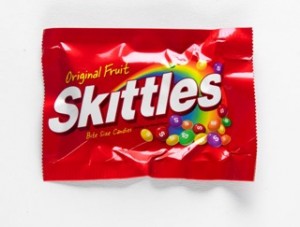 Researchers at the University of Southampton found that colors such as Yellow #5, Yellow #6, and Red #40 could cause hyperactivity in children. Ironically, foods marketed to children are often the most heavily dyed foods in the supermarket.
Researchers at the University of Southampton found that colors such as Yellow #5, Yellow #6, and Red #40 could cause hyperactivity in children. Ironically, foods marketed to children are often the most heavily dyed foods in the supermarket.
12. Your stomach bug is likely food poisoning.
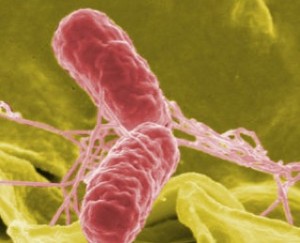 The Centers for Disease Control and Prevention estimates that every year, 48,000 Americans receives food poisoning from contaminated food, and that puts a $152 billion strain on the economy. What’s worse, an astonishing 3,000 of those people die. Where’s the problem? Click ahead to find out.
The Centers for Disease Control and Prevention estimates that every year, 48,000 Americans receives food poisoning from contaminated food, and that puts a $152 billion strain on the economy. What’s worse, an astonishing 3,000 of those people die. Where’s the problem? Click ahead to find out.
13. Forty-two percent of raw supermarket chicken is contaminated.
 In a study by Consumers Union, the driving force behind Consumer Reports, 12 percent of tested chickens were infected with Salmonella, and nearly half carried Campylobacter. Campylobacteriosis is one of the most common causes of food poisoning in America.
In a study by Consumers Union, the driving force behind Consumer Reports, 12 percent of tested chickens were infected with Salmonella, and nearly half carried Campylobacter. Campylobacteriosis is one of the most common causes of food poisoning in America.
14. Gulf Coast oysters carry E. coli.
 When researchers from Arizona tested Gulf Shore oysters, they found E. coli in every single sample. As filter-feeders, oysters naturally sift through the pollutants in the water, increasing their risk of contamination by pathogens. If you’re buying oysters from anything less than a highly trusted source, make sure you cook them through.
When researchers from Arizona tested Gulf Shore oysters, they found E. coli in every single sample. As filter-feeders, oysters naturally sift through the pollutants in the water, increasing their risk of contamination by pathogens. If you’re buying oysters from anything less than a highly trusted source, make sure you cook them through.
15. The USDA is allowing your meat to be “cleaned” with ammonia—and they’re hiding it from you.
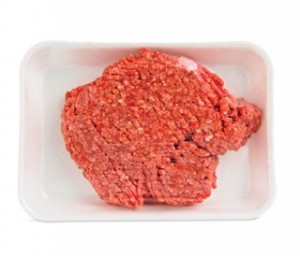 The typical fast-food burger is made with slaughterhouse trimmings, fatty cuts of beef typically reserved for pet food and cooking oil. What’s more, these burgers contain pieces of hundreds, potentially even thousands, of different cows. This creates an environment where bacteria thrive, so to clean the meat, the USDA allows a company called Beef Products to pipe the raw beef through pipes and expose it to ammonia gas. Never mind that ammonia is a poison or that evidence suggests the process may not be fully effective. The USDA deems it safe enough, and it allows the meat to be sold without any indication that it received the gas treatment.
The typical fast-food burger is made with slaughterhouse trimmings, fatty cuts of beef typically reserved for pet food and cooking oil. What’s more, these burgers contain pieces of hundreds, potentially even thousands, of different cows. This creates an environment where bacteria thrive, so to clean the meat, the USDA allows a company called Beef Products to pipe the raw beef through pipes and expose it to ammonia gas. Never mind that ammonia is a poison or that evidence suggests the process may not be fully effective. The USDA deems it safe enough, and it allows the meat to be sold without any indication that it received the gas treatment.
16. Aluminum cans are lined with a hormone-disrupting toxin.
 Bisphenol A, or BPA, is the chemical found in plastic bottles, glass jar lids, and the lining of food-containing tins and cans. In your body, BPA acts similar to estrogen, and it has been linked to behavioral problems, reproductive issues, and obesity. The industry has been slow to find a replacement, so limit exposure by switching to glass containers or plastic bottles labeled BPA-free.
Bisphenol A, or BPA, is the chemical found in plastic bottles, glass jar lids, and the lining of food-containing tins and cans. In your body, BPA acts similar to estrogen, and it has been linked to behavioral problems, reproductive issues, and obesity. The industry has been slow to find a replacement, so limit exposure by switching to glass containers or plastic bottles labeled BPA-free.
17. Roughly two-thirds of bottled water doesn’t comply with FDA standards.
 When the Food and Drug Administration set bottled-water regulations, it left in one gaping loophole: The regulations apply only to bottled waters sold across state or country borders. Bottles packaged and sold within a single state don’t have to comply with national standards. Although many states do have their own set of (nationally unregulated and unrecognized) regulations in place, one in five have none. Furthermore, government and industry estimates figure that 25 percent of water bottles sold in the US contain mere tap water. You should be so lucky as to end up with one of those; the FDA’s rules are far more lax than the tap water standards set by the EPA.
When the Food and Drug Administration set bottled-water regulations, it left in one gaping loophole: The regulations apply only to bottled waters sold across state or country borders. Bottles packaged and sold within a single state don’t have to comply with national standards. Although many states do have their own set of (nationally unregulated and unrecognized) regulations in place, one in five have none. Furthermore, government and industry estimates figure that 25 percent of water bottles sold in the US contain mere tap water. You should be so lucky as to end up with one of those; the FDA’s rules are far more lax than the tap water standards set by the EPA.
18. We drink twice as many calories today as we did 30 years ago.
 The average American drinks 450 liquid calories every day, according to a study from the University of North Carolina. And booze isn’t the problem. Blame the bigger bottles of soda, the sugar-loaded coffee drinks, and the barrel-sized smoothies.
The average American drinks 450 liquid calories every day, according to a study from the University of North Carolina. And booze isn’t the problem. Blame the bigger bottles of soda, the sugar-loaded coffee drinks, and the barrel-sized smoothies.
19. Fast food signs alter your behavior
 A study published last year in Psychological Science reveals that the mere sight of a fast-food sign on the side of the road is enough to make people feel rushed, which can lead to impulsive decisions—and dangerous nutritional choices. Sidestep your impulses the next time you eat out: Plan your order before you walk through the door and then stick with it.
A study published last year in Psychological Science reveals that the mere sight of a fast-food sign on the side of the road is enough to make people feel rushed, which can lead to impulsive decisions—and dangerous nutritional choices. Sidestep your impulses the next time you eat out: Plan your order before you walk through the door and then stick with it.
20. There are crushed bugs in your food.
 Carmine, a vibrant red food colorant, is actually the crushed abdomen of the female Dactylopius coccus, a beetle-like African insect. Not only is the thought of eating bug juice gross, but it also poses an ethical issue for some vegetarians and vegans. Look for it in red-colored candies and juices.
Carmine, a vibrant red food colorant, is actually the crushed abdomen of the female Dactylopius coccus, a beetle-like African insect. Not only is the thought of eating bug juice gross, but it also poses an ethical issue for some vegetarians and vegans. Look for it in red-colored candies and juices.


